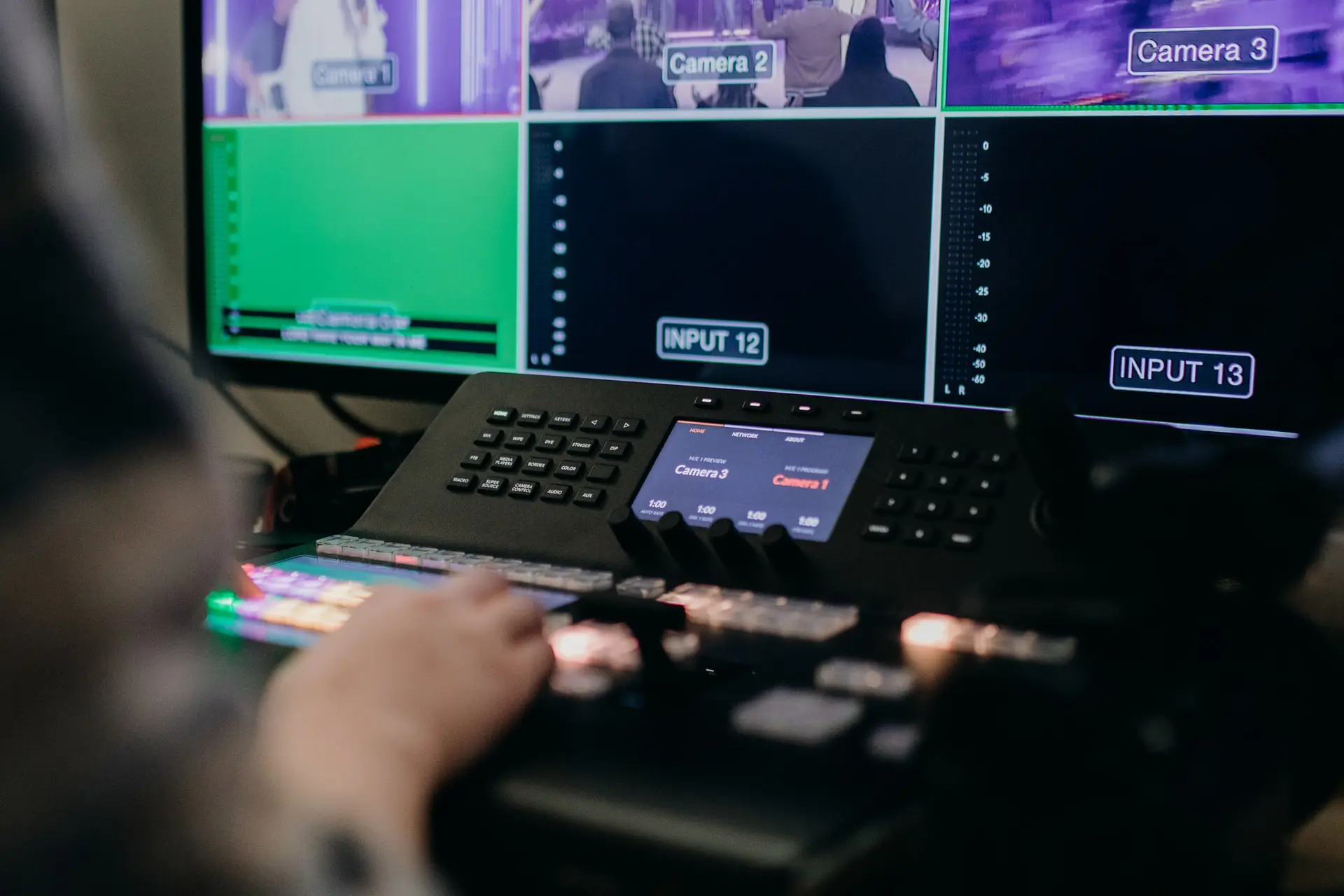More Internet users are watching livestreams to consume content. Multistreaming is about streaming to different destinations on the network at the same time. We explain what multistreaming can do, how it works as simply as possible, and why it’s useful for all content creators.
Table of contents
+
It all started with a radio host who sold can openers via the radio. That was in 1977, and Bob Circosta is considered the pioneer of the home shopping industry. He sold can openers for radio station administrator Lowell Paxson on a radio show and had a huge success. This is where teleshopping began. Today, it is possible to consume content live over the Internet on different platforms. Multistreaming has arrived in the new media and is being used more and more. The establishment of social networks plays a central role in this. This is how it works …
What is multistreaming?
Multistreaming, a special form of one-to-many streaming, is the parallel distribution of a live stream to different target platforms. With multistreaming, a signal is sent to several destinations at the same time. The destinations can be social media channels such as Facebook, Twitter, Twitch, or YouTube and websites (RTMP/player). Where you can stream to depends on the multistreaming software you use. Some offer a limited number of destinations, others have unlimited options. In most cases, the providers that can live stream to a limited number of destinations are less expensive than those that allow you to reach numerous final destinations.
Is multistreaming legal?
In general, it is legally permissible to broadcast a livestream on several platforms at the same time. So the social media platforms do not rule this out. However, there are scenarios where you need to be careful. For example: if you are a Twitch affiliate or Twitch partner, you are not allowed to live stream to another target—like YouTube—at the same time. Here, special exclusivity obligations apply that affect live content. It is recommended to check the agreements in advance. If you are using Twitch and are not a Twitch affiliate or Twitch partner, live streaming to multiple destinations at the same time is not a problem.
How multistreaming works
Basically, creators need three things to multistream: their content, the hardware such as a computer or smartphone and the necessary production equipment, and a suitable multistreaming provider. This can be made as simple as possible or very complex to implement on a high-level professional.
Just a few steps to multistream

Livestream with multiple cameras in production. Photo: Izaak Kirkbeck / Unsplash
Choose a multistreaming provider that works for you. Check your requirements for your project: Livestreaming and/or production. If you’re planning a large-scale production, it’s worth choosing an experienced livestreaming and production service.
Find out which social media accounts offer livestreaming and where you want to stream from. Usually, just about all platforms offer this option these days. Get familiar with the settings on the various social networks. Decide if you also want to stream to a website. If you use professional software like Contentflow for multistreaming, you can achieve all the desired goals simultaneously with just a few clicks.
Then make the appropriate settings in the multistreaming software and/or check that all arrangements have been made for the production. Then start your multistreaming.
These 3 solutions exist
- Hardware encoder with function for multistreaming. Attention: There must be sufficient bandwidth of the Internet connection for the video upload. And you need an encoder for each stream, which can be quite a lot.
- Desktop software. Attention: Here, as well, the appropriate bandwidth and hardware capacity must be available. You should have some experience with the technology to connect the appropriate hardware with the desktop software.
- Cloud software solution. Pro: The cloud-based solution provides the necessary infrastructure. Applications are usually very intuitive and streams can be distributed with a few clicks.
Worth reading, as well: What streaming bandwidth do you need for live streaming in the upload?
What does multistreaming cost?
The price differences are very high, since different providers offer more or less features. As a rule, the services that offer much also cost correspondingly more. Those that provide fewer options cost less as a result. Some live streaming services that offer multistreaming cost up to about 50 euros per month. Those who opt for maximum flexibility, many features and DSGVO compliance can expect basic packages of several hundred euros.
Why is multistreaming relevant for business?
With multistreaming, you can reach many people simultaneously in real time on different platforms, regardless of the content you want to broadcast. This means you can address your target group directly where they spend time online – on social networks. Many companies, brands, start-ups, institutions, marketers, and influencers are already using this opportunity. For business, it can be very worthwhile because more and more people are consuming content via the Internet. So the high reach is one of the biggest advantages of multistreaming. Distributing the livestream on several platforms at the same time also saves time. If needed, the respective livestream can also be made available afterwards as video-on-demand content. Multistreaming therefore gives creators maximum flexibility and, at best, generates more revenue.
Multistreaming for media, journalism, and politics
Multistreaming is not only useful for business, i.e., for profit-oriented projects. It is also used for global knowledge transfer and information sharing. Livestreaming has been used as a tool in journalism or politics for some time. Of course, multistreaming is used when a livestream is displayed on several channels at the same time.
Professional multistreaming with Contentflow

Use Contentflow on a tablet.
A professional multistreaming provider should fulfill certain criteria. These include various points from the categories of price-performance ratio, technical features, support options, and DSGVO compliance. First and foremost, a resilient infrastructure must be installed for a multistream to operate technically without a problem. Without this, there is no guarantee that multistreaming will reach the target group smoothly.
Many services offer a range of helpful technical features. Contentflow offers live clipping, graphic overlays, web players, moderated chats, flowcharts and much more. Contentflow also offers to manage the entire production process. More information about this can be found here. How to implement multistreaming with Contentflow in a simple and high-quality way is described on this landing page.
Conclusion
The medium of video is the biggest growth driver for Internet use. Not only digital platforms such as YouTube, Facebook, and others can benefit from this, but also the content producers themselves. After all, if they produce professional live content that people watch, they will, at best, also see higher reach figures and boost their business. This is where multistreaming strategies come into play. And they can certainly help distribute can openers or other products. But not only that, multistreams are also a different way of sharing information when the goal is to reach as many people as possible in the places where they spend their time every day anyway: on the web and on social portals.






 This project has received funding from the European Union’s Horizon 2020 research and innovation programme under grant agreement No 876239, 959379 & 965502.
This project has received funding from the European Union’s Horizon 2020 research and innovation programme under grant agreement No 876239, 959379 & 965502.
